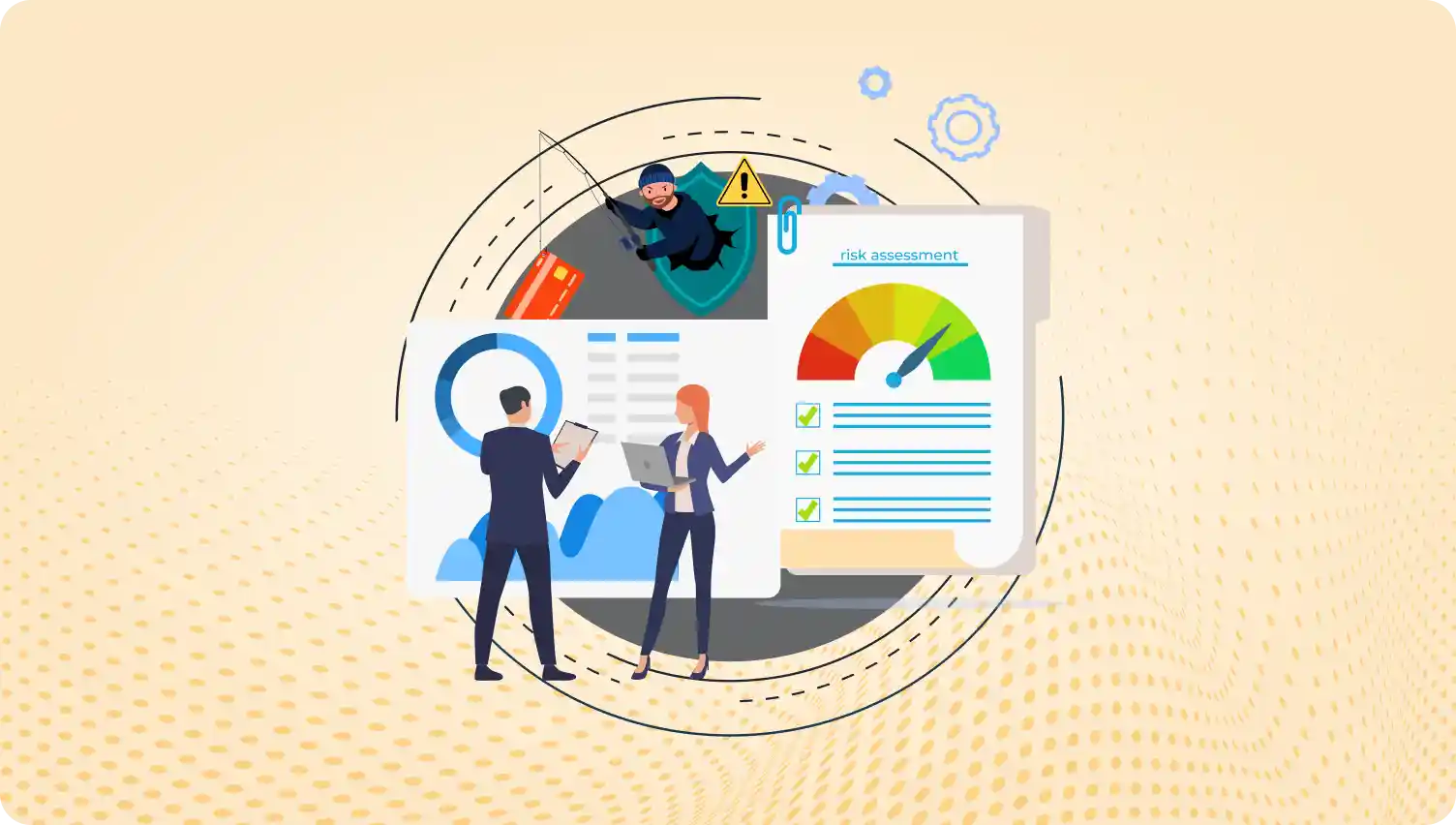
Customer risk assessment (CRA) plays a crucial role in the banking sector, ensuring financial institutions comply with Know Your Customer (KYC) & Anti-Money Laundering (AML) regulations. In India, banks must implement stringent CRA processes to mitigate financial risks, detect fraudulent activities, and comply with regulatory frameworks set by the Reserve Bank of India (RBI) & the Financial Intelligence Unit – India (FIU-IND).
This article explores the best practices for conducting customer risk assessments in banking, focusing on KYC compliance, AML measures, & risk management strategies to safeguard financial institutions from illicit activities.
Customer risk assessment is the process of evaluating the potential risk a customer poses to a financial institution based on various factors such as identity verification, transaction behavior, geographic location, and business operations. Banks use CRA to classify customers into risk categories—low, medium, or high-risk—which helps in monitoring & implementing enhanced due diligence where necessary.
A well-structured CRA framework helps banks detect and prevent money laundering, terrorist financing, & fraudulent transactions.
Regulatory bodies like the RBI mandate banks to conduct proper customer due diligence (CDD) and risk profiling to meet AML & KYC compliance requirements.
Failing to assess customer risks effectively can lead to hefty fines, reputational damage, & operational losses for banks.
Banks must conduct rigorous KYC verification to confirm a customer’s identity using documents like Aadhaar, PAN, passport, & voter ID. Digital KYC and Aadhaar-based e-KYC have streamlined identity verification processes in India.
A risk-based approach categorizes customers based on their risk level:
Low-Risk Customers – Salaried employees with regular income sources.
Medium-Risk Customers – Small business owners, freelancers, & individuals with high transaction volumes.
High-Risk Customers – Politically Exposed Persons (PEPs), Non-Resident Indians (NRIs), and individuals from high-risk jurisdictions. Banks must apply Enhanced Due Diligence (EDD) for high-risk customers, including source of funds verification & ongoing monitoring.
Banks must implement real-time transaction monitoring systems to identify suspicious activities such as:
Customer risk assessment is not a one-time process. Banks must conduct periodic reviews based on changes in customer profiles, transaction behavior, and regulatory updates.
Modern banking institutions leverage AI-driven risk assessment models to analyze customer behavior, detect anomalies, & improve fraud detection mechanisms.
Banks should regularly update their KYC policies in line with RBI guidelines & global AML standards like FATF (Financial Action Task Force) recommendations.
Implementing AI-based risk assessment tools helps in real-time risk profiling and fraud detection.
Regular customer risk reviews ensure banks stay ahead of emerging threats & regulatory changes.
Staff training is crucial for ensuring accurate risk profiling and fraud detection.
Maintaining strong communication with RBI, FIU-IND, & law enforcement agencies enhances risk assessment efficiency.
In today’s digital era, technology plays a pivotal role in customer risk assessment (CRA), helping financial institutions in India enhance Know Your Customer (KYC) and Anti-Money Laundering (AML) compliance. With the increasing complexity of financial crimes, banks and fintech companies are leveraging artificial intelligence (AI), machine learning (ML), big data analytics, & automation to strengthen risk management frameworks.
How technology is revolutionizing customer risk assessment in India, ensuring accuracy, efficiency, and regulatory compliance.
Customer risk assessment is the process of evaluating potential risks associated with a customer based on factors like:
Banks classify customers into low, medium, or high-risk categories to monitor and prevent financial crimes such as money laundering, terrorist financing, & fraud.
AI-powered systems analyze customer behavior, transaction history, & digital footprints to create risk scores. Machine learning algorithms detect patterns, anomalies, and suspicious activities, reducing false positives in fraud detection. For example, AI-driven fraud detection can flag unusual international transactions or high-volume cash deposits in real time, allowing banks to take immediate action.
Traditional KYC verification is time-consuming & prone to errors. Technology has introduced:
Blockchain technology enhances data security, transparency, and immutability in customer verification. Banks can store customer records on a decentralized ledger, reducing fraud risks & improving compliance.
Big data enables banks to analyze vast amounts of transactional and behavioral data to detect fraudulent patterns. Advanced analytics tools assess historical trends, customer spending habits, and suspicious activities, enhancing risk assessment accuracy.
Banks use AI-driven AML transaction monitoring systems to detect:
Technology enables banks to implement a risk-based approach (RBA) by assigning risk scores to customers based on:
Cloud-based solutions allow banks to process large-scale customer data efficiently. Secure cloud platforms offer:
APIs enable real-time integration between banks, regulatory authorities, and fintech firms. This allows instant access to:
Despite its advantages, technology-driven customer risk assessment faces challenges such as:
The future of customer risk assessment in India will be driven by:
Technology is revolutionizing customer risk assessment in India, helping banks enhance KYC compliance, AML measures, & fraud detection. By leveraging AI, machine learning, big data, and blockchain, financial institutions can build a robust risk management framework that ensures security, efficiency, & regulatory adherence.
Embracing tech-driven risk assessment will not only help banks combat financial crimes but also enhance customer trust & streamline banking operations.
A robust Customer Risk Assessment (CRA) strategy is essential for banks in India to combat financial crimes, ensure regulatory compliance, and protect their reputation. By leveraging AI-driven risk management solutions, enhanced KYC practices, & automated AML monitoring, banks can create a secure and fraud-free financial ecosystem.
Adopting best practices in customer due diligence (CDD) and continuous transaction monitoring will help banks stay compliant while minimizing financial risks.